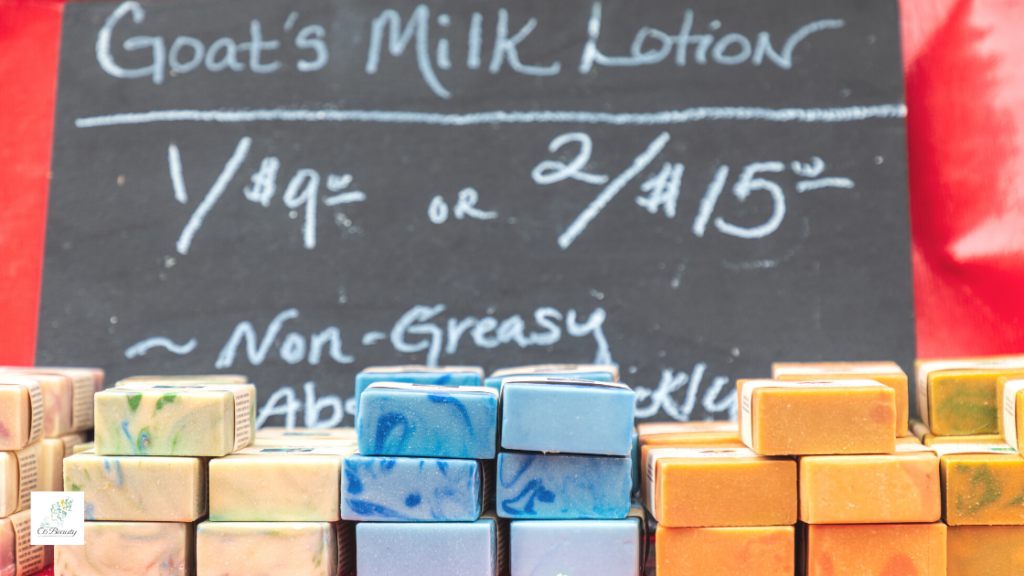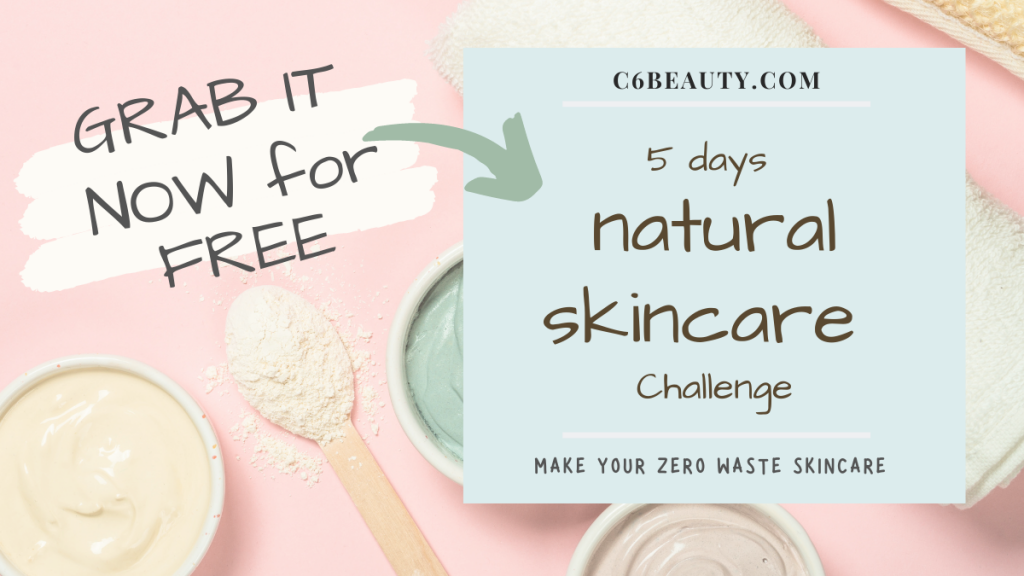What are the best websites to buy DIY skincare ingredients? Searching for the right ingredients is a key part of the whole process. The search, sometimes, could be long and tedious. It goes through searching various distributors, looking for the desired products, comparing the price and evaluating the shipping costs. In short, a process that can be time consuming. With this article, I would like to save you some precious time and effort. As you continue reading you will discover the best websites that I often use to buy ingredients for my DIY skincare and soaps. These are based in Europe but at the end of the article you will also find the main non-EU e-commerce, in case you are interested. In short, a list of websites that you can visit and evaluate for your next purchases.
Disclosure: Some of the links in this post are affiliate links. By clicking through them and making a purchase, I may receive a small commission WITHOUT any additional cost to you.
Gabi
What are cosmetics made of?
Making skincare products at home is a hobby that requires creativity but also a lot of technical knowledge. Knowing which ingredients to choose and how to use them in the recipe is necessary to create quality products. Let’s take an example by considering cosmetics. To create skincare products, there are many categories of ingredients that we will need to know: oils and butters, emulsifiers, thickeners and stabilizers, waxes, clays, surfactants and active ingredients just to list a few.
Knowing their role and how to use them helps us choose the best ingredients for our formulations. To help you along this path, check out my courses finally online! You’ll find comprehensive courses designed to guide you step-by-step through the entire formulation process. This is an effective way to help you create your own products according to your needs, without necessarily having to rely on tutorials.
In addition, I leave below a couple of links you can consult. An article dedicated to waxes in cosmetics and a second article dedicated to the formulation of creams and how to categorize its ingredients, you can find here.
Where to buy DIY skincare ingredients: Physical stores
If there are local retailers in your town that specialize in selling ingredients for DIY cosmetics, your first option might just be to get them directly from them. In my case, however, very few ingredients I found for sale in physical stores. Examples of ingredients easily available in stores are coconut oil and Shea Butter, which are essential ingredients to start making your own products at home. To know what other products cannot miss to start formulating at home, I suggest you take a look at my article entirely dedicated to them. You can find it here.
The creation of more complex products, such as creams and soaps, requires ingredients that are hardly sold locally. In this regard, some e-commerce, specialized in raw materials for DIY cosmetics, come to our aid.
Where to buy ingredients for skincare: e-commerce

1. Amazon online shopping for raw material
Among the most famous e-commerce and where we will most likely be able to find most of the desired ingredients, there is Amazon. Using Amazon, I have been able to discover new brands and e-commerce that use the platform to sell their products. Some of them have become true benchmarks in my raw material purchases.
I’m sure many, reading the name Amazon, will disagree because Amazon brings with it a lot of controversy and criticism. Precisely because of its global presence is accused of crushing other e-commerce and is therefore often the focus of debates in the media. In this article, I don’t want to analyze this point or get into controversy because I don’t have the skills or the information. I would like to start by mentioning Amazon because I have often purchased raw materials from this marketplace. In addition, it is the tool from which I start when I am looking for DIY cosmetics products. As you continue reading, I’ll explain how I use some of Amazon’s features in the process of buying raw materials. But first, let’s find out about other ecommerce stores to visit if we want to buy raw materials.
2. Naissance(UK)
An e-commerce I came across through Amazon is Naissance (UK). Intrigued by the wide variety of products I visited their website and found that the choice was really wide. Oils and butters, hair care ingredients, and even clays, essential oils and more. Really great range of products at competitive prices. For each ingredient you can consult the data sheet (MSDS), and have a brief indication of how to use them in case you do not know. Through the website you can find out that the company is very conscious of the origin of raw materials supporting farmers and producers around the world through fair trade. Certainly an added value to consider when you want to make more responsible purchases.
3. Aroma Zone(FR)
Aroma Zone is the benchmark e-commerce for buying ingredients for DIY cosmetics. It’s impressive the amount of products offered and, if you’re not careful, you risk losing entire afternoons just browsing through its products. Even for Aroma-Zone, for each ingredient you can consult its data sheet, optimal dosages but also discover new examples of recipes in which to use them. It was the first retailer I bought my first ingredients from.
I would recommend it precisely because through the site you can also learn a lot about the ingredients and discover some new recipes to try. Being a French retailer, you have to rely on the help of google translate to translate the web content because there is no possibility to switch languages. To consider the shipping from €7 and up depending on the country.
4. Dragonspice (DE)
Dragonspice is a German retailer from which I very often purchase my products. They offer a good assortment of oils and butters, emulsifiers and essential oils. The prices are really good and you can save something. Again, google translate has to help us translate the descriptive content into German, if we are not very confident with the language. Beyond the language issues that can be overcome by installing a google extension, I would recommend this website for those who know exactly what to buy. Dragonspice offers a brief description of the product without suggesting recipes or types of products in which to use it. I consider it great for those who already know where to use the ingredients and in what quantity.
Navigating foreign sites can be tricky and can prevent us from taking advantage of the more competitive prices of some ingredients. That’s why I made a tutorial on how we can buy our favorite products while overcoming this problem. Let’s see how to do it in this tutorial!
These are the main e-commerce from which I buy ingredients for my DIY cosmetics recipes. Also noteworthy are:
- Manske-shop (DE) where I have purchased excellent emulsifiers and surfactants or
- Glamourcosmetics (IT) for the large amount of products offered and the excellent information provided for each ingredient.
NB: always consider shipping costs, it can play a big role.
If you are looking for biodegradable pigments here I have the solution. After a long search I found the company that sells eco-friendly, dye-free, plastic-free glitter pigments. Vita von Waldehoe (AT) offers this product that I purchased and used in some soaps using the cold process method. You can find the recipe and pictures of the final soap here. Worth a look.

Internationally, the most used e-commerce to purchase raw materials are:
- Brambleberry,
- Making Cosmetics,
- Bulk Apothecary,
- Nature’s Garden Wholesale Candle & Soap in the United States.
- Pure Nature and New Directions Aromatics based in Australia and New Zealand.
How to buy cosmetic ingredients from non English ecommerce
Purchasing Strategy
My buying strategy starts with Amazon. I use its feature of being able to quickly compare different products by price, quantity, reviews and any shipping costs. This feature allows me to make a first selection right away. I then compare, the most interesting product on Amazon with the same one sold on the e-commerce.

If the price is in the e-commerce is lower, I add the products I need in the cart. At this point, I will have an idea of the final price, including shipping costs. I repeat this comparison for every e-commerce from which I often buy ingredients to evaluate the eventual final price of the order.
In this way, I will have created “do-it-yourself quotes”, easy to consult to buy with more awareness.
What about you? Do you have any e-commerce referrals you’d like to recommend? Let me know via email or social media!


